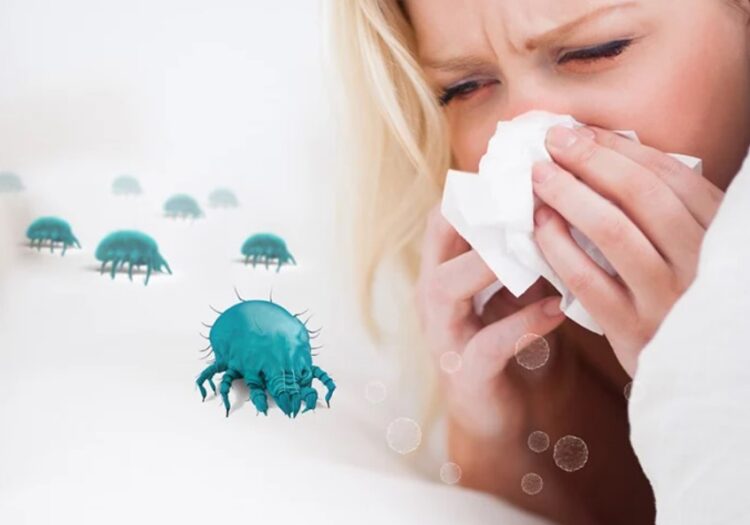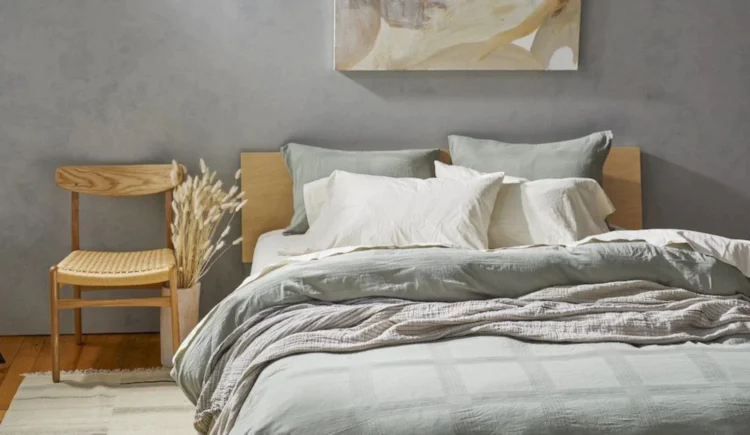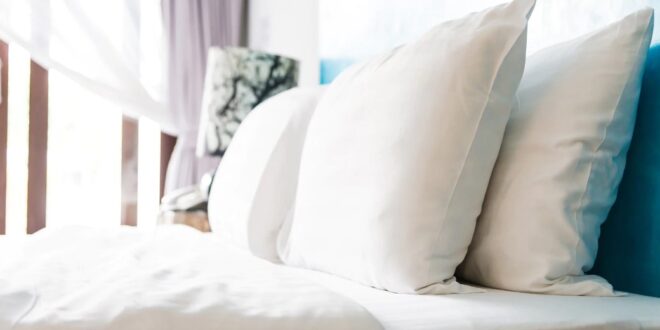A good night’s sleep is essential for our overall well-being. However, many people unknowingly share their beds with tiny creatures called dust mites, which can have a significant impact on our health.
They are microscopic insects that thrive in warm and humid environments, such as bedding and mattresses. While they are harmless to most individuals, for those with allergies, these tiny creatures can trigger a range of uncomfortable symptoms.
The Role of Dust Mites in Causing Allergies
Dust mites are a common cause of allergies, particularly in individuals who are prone to sensitivities. These microscopic pests feed on dead skin cells that we naturally shed, and their droppings contain proteins that can act as allergens.
When inhaled or exposed to these allergens, susceptible individuals may experience a variety of allergic reactions.
Understanding the Signs and Symptoms of Dust Mite Allergies
Allergies caused by dust mites can manifest in various ways, including nasal congestion, sneezing, itchy and watery eyes, coughing, and even skin rashes. Some people may also experience difficulty breathing or develop asthma-like symptoms.
If you notice these symptoms worsening at night or upon waking up, it could be an indication of dust mite allergies.

Importance of Keeping Your Bed Clean and Dust Mite-Free
Considering that we spend approximately one-third of our lives in bed, it becomes crucial to maintain a clean and dust mite-free sleep environment. By doing so, we can reduce the likelihood of experiencing dust mite allergies and enjoy healthier and more restful sleep.
Taking simple steps to minimize its population can make a significant difference in managing these allergies effectively.
Regularly Washing Bedding to Remove Dust Mites and Allergens
One of the most effective ways to keep dust mites at bay is by regularly washing your bedding. Wash your sheets, pillowcases, and blankets at least once a week in hot water to kill any dust mites present. Hot water (130°F or higher) is necessary to effectively eliminate these microscopic pests.
Additionally, using a high-quality laundry detergent can help remove allergens from your bedding, ensuring a clean and allergen-free sleep surface.
Using Hypoallergenic Mattress and Pillow Covers for Protection
Another strategy to create a dust mite-free sleep environment is to invest in hypoallergenic mattresses and pillow covers. These covers act as a barrier between you and the dust mites, preventing them from coming into direct contact with your skin or respiratory system. Hypoallergenic covers are made from tightly woven fabrics that are impenetrable to dust mites and their allergens.
To create an extra layer of defense against them, consider purchasing these protective covers when you buy linen online. Look for covers specifically designed to block dust mites and allergens, and ensure they are easy to clean and maintain.

Vacuuming and Dusting the Bedroom to Reduce Dust Mites
Regular cleaning of your bedroom is crucial in reducing dust mite populations. Vacuum your mattress, carpets, and rugs at least once a week using a vacuum cleaner equipped with a HEPA filter. This type of filter is highly effective at trapping microscopic particles, including these allergens.
Additionally, dust surfaces, such as shelves and nightstands, use a damp cloth or electrostatic duster to prevent the spread of dust and allergens.
Minimizing Clutter and Eliminating Dust Mite Hiding Spots
Dust mites thrive in cluttered environments as they provide ample hiding spots. Minimize clutter in your bedroom by removing unnecessary items that can accumulate dust and contribute to the growth of dust mite populations.
Store belongings in closed containers or cabinets to prevent its accumulation and make cleaning easier. Pay special attention to areas where it tends to accumulate, such as under the bed and in corners. Regularly vacuum and dust these areas to eliminate any potential hiding spots for dust mites.
Tips for Choosing Allergy-Friendly Bedding Materials
When it comes to selecting bedding materials, certain fabrics and materials are more allergy-friendly than others. Opt for hypoallergenic bedding made from natural fibers, such as cotton or bamboo.
These materials are less likely to trap allergens and are easier to clean, reducing the risk of dust mite infestations. Avoid synthetic materials that can retain moisture and provide a favorable environment for they to thrive.
Additionally, consider purchasing bedding labeled as allergen-resistant or specifically designed for individuals with allergies. These products often undergo specialized treatments that make them less susceptible to dust mites and allergen accumulation. When you buy linen online, look for reputable sellers that offer a wide range of hypoallergenic bedding options.

Creating a Clean and Healthy Sleep Environment
Maintaining a clean and healthy bed is crucial for minimizing the impact of dust mites and allergies on our sleep and overall well-being. By following simple practices like regularly washing bedding in hot water, using hypoallergenic covers, and vacuuming and dusting the bedroom, we can significantly reduce its populations and allergen exposure.
When choosing bedding materials, opt for natural fibers and allergy-friendly options that are easier to clean and less likely to harbor dust mites. Minimizing clutter and eliminating potential hiding spots for dust mites further contribute to a clean sleep environment.
Remember, a clean and dust mite-free bed promotes better sleep quality and helps alleviate the symptoms associated with dust mite allergies. So, take the necessary steps to create a sleep sanctuary that promotes health and well-being.
When it comes to finding the right bedding materials and products, consider exploring the option to buy linen online. Reputable online retailers offer a wide selection of allergy-friendly bedding that can help you create a clean and healthy sleep environment. Make informed choices and prioritize your sleep health to ensure a restful and allergy-free night’s sleep.
By implementing these strategies and making a conscious effort to maintain a clean and dust mite-free bed, you can transform your sleep environment into a sanctuary that promotes optimal health and well-being. Say goodbye to the discomfort of dust mite allergies and embrace the benefits of a clean and healthy bed for a restful and revitalizing sleep experience.
 Hi Boox Popular Magazine 2024
Hi Boox Popular Magazine 2024



